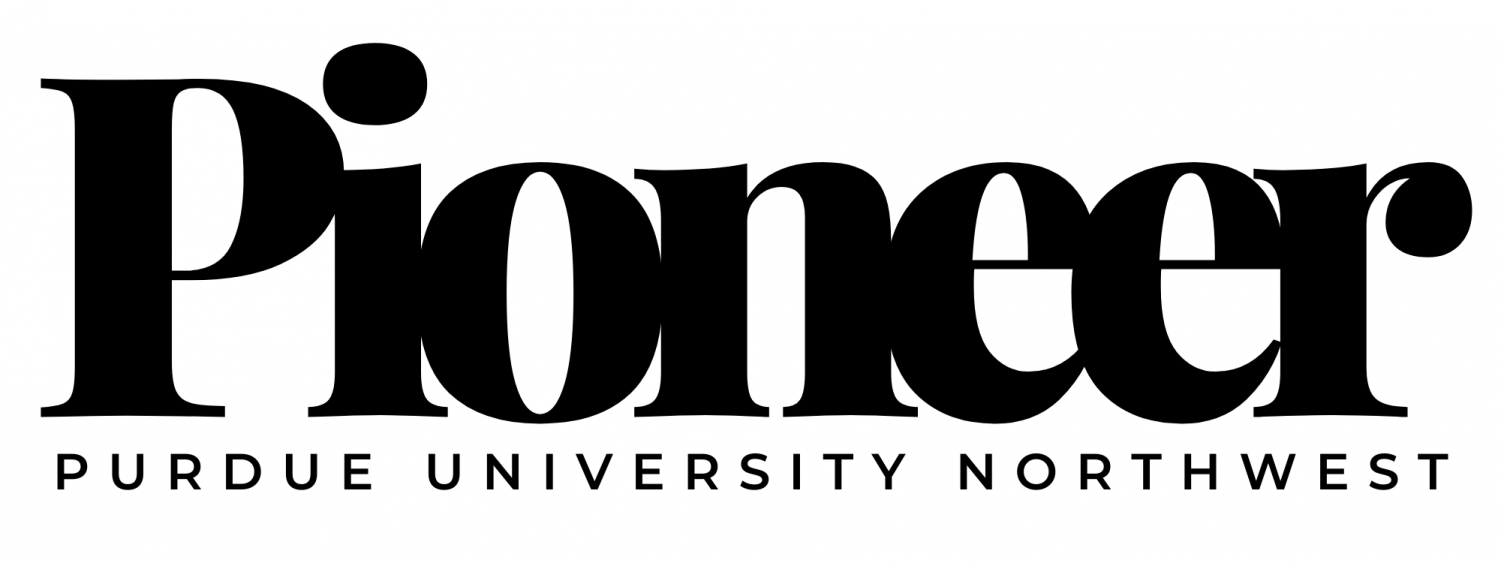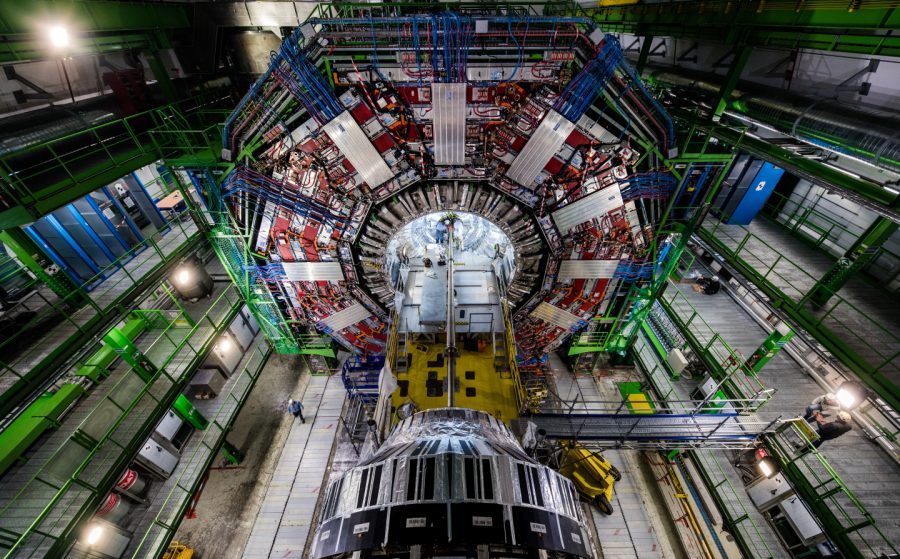Physics students and professors help upgrade important piece of the global nuclear experiment
The “heart” of the Compact Muon Solenoid pixel detector is replaced. The pixel detector, a high-speed 3D camera capturing particle collisions, is just one part of the CMS project that select students and staff in the Department of Chemistry and Physics will help CERN upgrade. Source: CERN
A team of PNW physics professors and students is making history with scientists around the world, to advance the boundaries of human knowledge about the universe.
They are working on an upgrade for an experiment hosted by a world-class physics research facility located in Switzerland, European Council for Nuclear Research, known as CERN. CERN’s mission is to push the frontiers of science and technology for the benefit of mankind – and it goes big to accelerate science.
The team’s project is a pixel detector upgrade for the Compact Muon Solenoid experiment, which is one of the largest world-wide scientific collaborations in history. That experiment is a part of the Large Hadron Collider experiment.
“The LHC is the largest scientific machine ever built by mankind,” said Neeti Parashar, PNW’s physics team leader and a principal investigator with the National Science Foundation. The machine is also the most powerful particle accelerator ever built, with a whopping 27-kilometer ring of superconducting magnets and accelerating structures that boost the energy of the particles.
Parashar was part of the team that discovered the Higgs boson particle aka “The God Particle” in 2012. The following year a Nobel Prize was awarded to the theorists who proposed its existence. The Higgs boson particle is important to physics because it proves the existence of the Higgs field, an invisible field throughout the universe that gave mass to all matter.
She has received over $2 million from the National Science Foundation to research particle physics, also known as high-energy physics. The grant funds the research, and PNW is designated as a pixel institution on the CMS experiment.
Over the last 15 years, about 15 PNW students have participated in the project to help build the pixel detector, which is just one section of CMS. Students worked on Phase-O and Phase-1 Pixel Detector, which Parashar said is an integral part of the CMS Tracker sub-detector. Some students were stationed at Fermilab in Batavia, Illinois and a few worked and traveled to CERN.
The CMS functions as an enormous, high-speed camera, taking 3D shots of particle collisions from all directions, up to 40 million times each second, and observes any new phenomena the Hadron Collider might reveal, according to CERN. It is used for many studies, from searching for new particles like the Higgs boson to searching for elements of dark matter.
While many of the LHC’s detectors were built underground, in place, the CMS detector was constructed in 15 sections at ground level, then lowered into an underground cavern near Cessy in France, where it was reassembled. PNW students helped construct one of those sections.
In addition to Parashar, the school’s high energy physics group consists of Jim Dolen, a post-doctoral fellow based at Fermilab, and some undergraduate students. For their current Phase-2 upgrade project, the PNW research group is using data collected from test beams at the Fermi National Accelerator Laboratory.
When she isn’t helping to upgrade the world’s most complex scientific instruments, Parashar enjoys teaching physics in Hammond.
“Physics has always been a very exciting subject, from knowing how our universe works to observing different things in nature,” she said, explaining that it provides the fundamentals of science that bring all disciplines together, especially STEM fields.
She also likes being part of a global collaboration, and notes that personnel from hundreds of countries and institutions with different cultures and languages built the Hadron Collider.
“This in itself is a herculean feat,” she said. “Ultimately, the science we do is the melting pot for everyone involved.”



